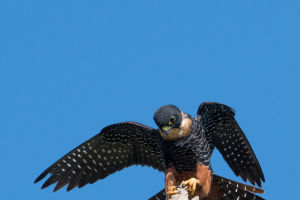The Tibetan antelope is not actually a sheep, but a collective name for a group of animals in the even-toed bovine family.
They are a diverse group of herbivores, a group within the bovine family.
They are graceful, lithe and alert with long, slender limbs and small, pointed hooves.
Some species have horns in both sexes, while others have horns only in the males.
The tail varies in length. They are 60 to 90 cm tall and often come in groups of 5 to 10, some of which can number in the hundreds.
They generally live in grasslands, wilderness or deserts, and some inhabit mountainous areas.
Some of these species are found in China, such as the Przewalski's gazelle, goose-throated gazelle, Tibetan gazelle and spotted gazelle.
The gazelle is the size of a goat, but without the beard.
The gazelle is 110-130cm in length, the gazelle is about 70cm tall at the shoulder and the gazelle weighs 40-50kg.
The eyes of the gazelle are large and protrude to the left and right. The gazelle has no infraorbital glands and has long ears. Both sexes have short, straight black horns.
The gazelle rests in bamboo forests and thickets during the day, but comes out at dusk and at night to feed.
They are very quiet in nature, with a few to several dozen or hundreds of antelopes per group.
When they are foraging, each herd has a large "sentry antelope" that stands tall and looks out for them.
If the antelope find anything unusual, it will immediately "call the police" and the other antelopes will dive for cover.
As they walk, the horned antelope's back arches upwards and they waddle around in a peculiar and amusing manner.
The high-snouted antelope has a particularly large, bulging snout, with the nostrils at the very tip, hence the name "high-snouted antelope".
The hair is dense brownish-yellow, the belly and inside of the limbs are white and the winter hair is greyish-white.
The high-snouted gazelle lives in desert and semi-desert areas. They live in small groups.
Sometimes they migrate in large groups of hundreds or thousands. In winter they are mostly active during the day and in summer they are mainly active in the morning and evening.
They migrate seasonally, moving south to warmer, sunnier slopes in winter. They are fast and hardy runners and are known by herders as "long distance runners".
The diet of the antelope is mainly grass and scrub. The antelope mates in the autumn and early winter. There is fierce competition between males for females, but not for long.
The Tibetan antelope feeds mainly on grasses and sedge plants.
the Przewalski's gazelle feeds mainly on shoots, stems and leaves of grasses, sedge and other sandy plants.
They are often seen in groups drinking from salty water, or on salty mud flats lapping up the salt.


